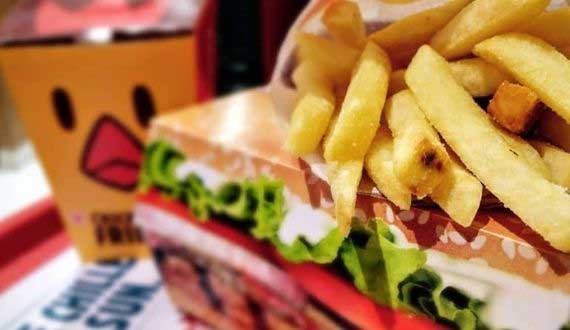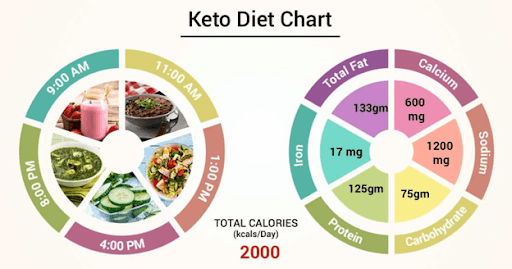Can junk food become healthy?

Can junk food become healthy?
Traditionally, dietary regimes are restrictive in nature People find difficulty in changing their dietary habits
Keto for beginners?
Following a ketogenic diet is the most effective way to enter ketosis. Generally, this involves limiting carb consumption to around 20 to 50 grams per day and filling up on fats, such as meat, fish, eggs, nuts, and healthy oils ( 6 ). It’s also important to moderate your protein consumption.
How do I know I’m in ketosis?
The easiest and most accurate way to confirm you’re in ketosis is to test your ketones using a blood ketone meter. You’re in ketosis once your blood ketone levels are at or above 0.5 mmol/L. Once your body converts to using ketones for fuel, your ketone levels may go down some from the initial rise.
Keto diet plan for beginners ?
The ketogenic diet is a very low carb, high fat diet that shares many similarities with the Atkins and low carb diets. It involves drastically reducing carbohydrate intake and replacing it with fat. This reduction in carbs puts your body into a metabolic state called ketosis.
Will ketosis burn belly fat?
A ketogenic diet is a very effective way to lose belly fat. As shown in the graph above, a ketogenic diet reduced total weight, body fat and abdominal trunk fat much more than a low-fat diet did.

How do you know if you’re in ketosis?
It’s possible to measure it by testing urine, blood or breath samples. But there are also telltale symptoms that require no testing:

- Dry mouth and increased thirst: Unless you drink enough water and get enough electrolytes like sodium, you may feel a dry mouth. Try a cup of bouillon or two daily, plus as much water as you need. You may also feel a metallic taste in your mouth.
- Increased urination: A ketone body, acetoacetate, may end up in the urine. This makes it possible to test for ketosis using urine strips. It also – at least when starting out – can result in having to go to the bathroom more often. This may be the main cause of the increased thirst (above).
- Keto breath: This is due to a ketone body called acetone escaping via our breath. It can make a person’s breath smell “fruity,” or similar to nail polish remover. This smell can sometimes also come from sweat, when working out. It’s often temporary.
Other, less specific but more positive signs include:
- Reduced hunger: Many people experience a marked reduction in hunger on a keto diet. In fact, many people feel great when they eat just once or twice a day, and may automatically end up doing a form of intermittent fasting. This saves time and money, while also speeding up weight loss.
- Possibly increased energy. After a few days of feeling tired (the “keto flu“) many people experience a clear increase in energy levels. This can also be experienced as clear thinking, a lack of “brain fog,” or even a sense of euphoria.
How to get into ketosis on a keto diet?
Here are the seven most important things to increase your level of ketosis, ranked from most to least important:
- Restrict carbohydrates to 20 digestible grams per day or less – a strict low-carb or keto diet. Fiber does not have to be restricted, it might even be beneficial for ketosis.
How much is 20 grams of carbs?
Use our visual guide to find out. Or simply use our keto recipes and meal plans, which are designed to keep you under 20 grams. No calorie counting required. Often, just restricting carbs to very low levels results in ketosis. So this may be all you need to do. But the rest of the list below will help make sure that you’re successful.
Eat enough fat to feel satisfied. A keto low-carb diet is normally a higher-fat diet, because fat supplies the energy that you are no longer getting from carbs.
This is the big difference between a keto diet and starvation, which also results in ketosis. A keto diet is sustainable while starvation is not.
If you feel as if you’re starving, you’re likely to feel tired and want to give up your diet. But a ketogenic diet should help you avoid getting too hungry, making it sustainable and possibly making you feel great.
So eat enough protein foods and low-carb veggies, with enough added fat to feel satisfied. If you’re hungry all the time, check that you are getting adequate amounts of protein at most meals and, if so, add more fat to your meals (like more butter, more olive oil, or some delicious sauces).
Our keto recipes have plenty of fat included, but you can adjust up or down, according to your own needs.
Maintain a moderate protein intake: A keto diet is not meant to be a very-high-protein diet. We recommend 1.2 to 2 grams of protein per kg of reference body weight per day.
This means about 100 grams of protein per day if your lean body mass weight is around 70 kilos (155 pounds). Check out our target protein ranges to find out how much protein you should be aiming for each day.
Despite concerns that people on keto diets eat “too much” protein, this does not seem to be the case for most people. Because it is very filling, most people find it difficult to overeat protein.
Although amino acids from protein foods can be converted to glucose, under experimental conditions, only a small percentage actually are.
This may be related to individual factors, such as degree of insulin resistance.
However, even people with type 2 diabetes usually do well with the adequate levels of protein Diet Doctor recommends, if their diets are also low carb.
At the same time, inadequate protein intake over extended periods of time is a serious concern. It can result in loss of muscle and bone, especially as you age.
This is why our keto recipes are designed with the right amount of protein. See our protein guide.
Avoid snacking when not hungry. Eating more often than you need, just eating for fun, or eating because there’s food around, reduces ketosis and slows down weight loss.
Though using keto snacks may minimize the damage when you’re hungry between meals, try to adjust your meals so that snacks become unnecessary.
If necessary, add intermittent fasting. For example, skip breakfast and only eat during 8 hours of the day, fasting for 16 hours (i.e. 16:8 fasting). This is effective at boosting ketone levels, as well as accelerating weight loss and improving insulin resistance.
It’s also usually easy to do on keto.
Add exercise. Adding any kind of physical activity while on low carb can increase ketone levels moderately.
It can also help speed up weight loss and improve type 2 diabetes.
Exercise is not necessary to get into ketosis, but it may be helpful.
Sleep enough and minimize stress. Most people benefit from a minimum of seven hours of sleep per night, on average. And try to keep stress under control. Sleep deprivation and stress hormones raise blood sugar levels, slowing ketosis and weight loss.
Plus they might make it harder to stick to a keto diet and resist temptations.
So while handling sleep and stress will not get you into ketosis on their own, they are still worth thinking about.
Keto supplements are not required. Note what’s not on the list above: you do not need expensive supplements, like exogenous ketones or MCT oil (medium-chain triglycerides). These supplements will likely not help you lose weight or reverse disease. At least there’s no evidence for that.
SATISFY YOUR CRAVINGS ANYTIME – KETONA SNACKS
Keto snacks are not only lower carbs, but also have a satisfying flavor. The key to a delicious and nutritious meal is tasty snacks . They are a great way to make up your healthy fat intake on the KETO, and the whole food, high-fat recipes are perfect for a between-meal boost whenever and whenever you need it. You’ll find snacks of all flavors (salty, sweet and savory) in this KETONA range . High-fat Keto-friendly snacks will keep you going strong in Ketosis and achieve the fat-burning state you’re aiming for as your body shifts from burning carbs to fats for energy

